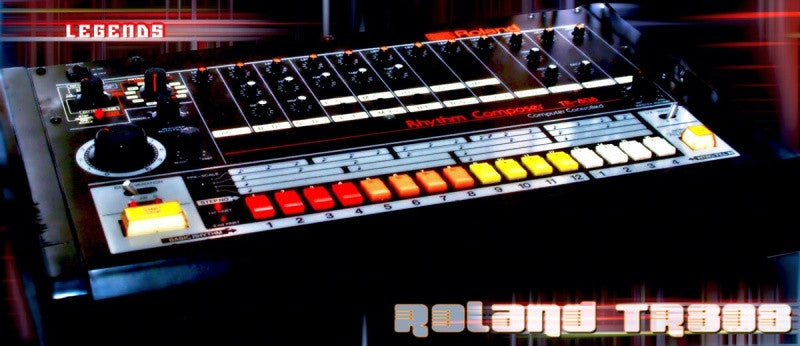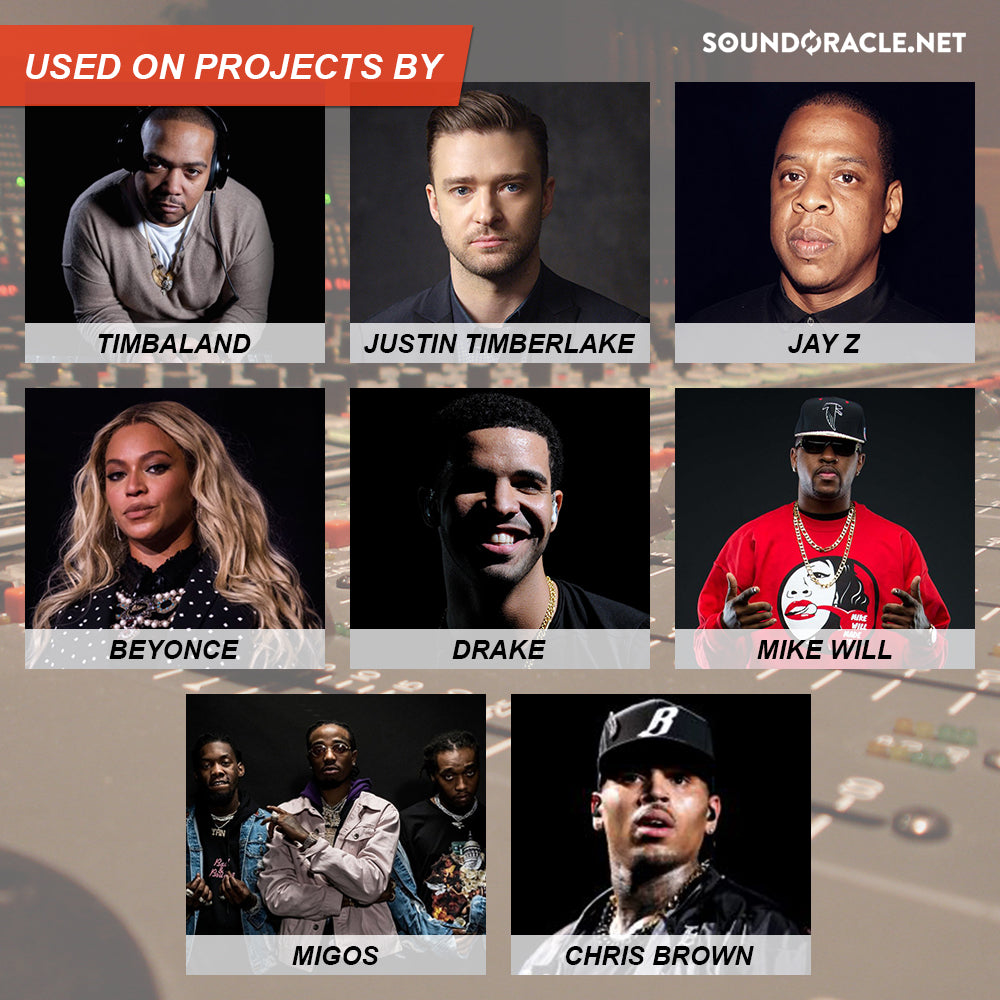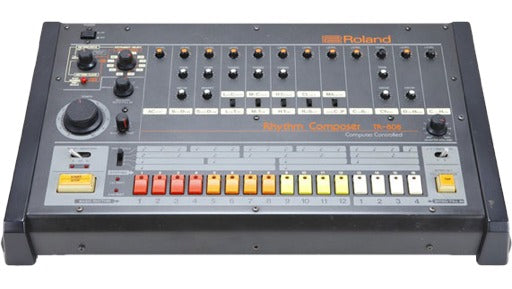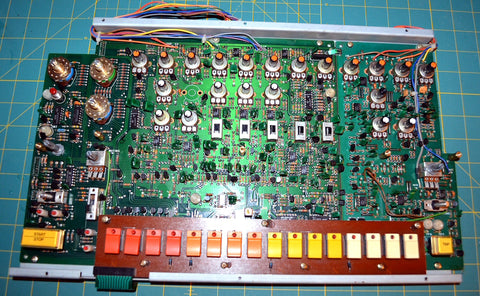
Brief history of the TR-808 that changed the musical landscape forever
The Roland TR-808 revolutionized the analog drum sounds crucial to the formation and development of countless genres that paved its place as the most central and influential electronic instruments in modern music since it’s quite release in 1980. From the biggest hits of the 80s to the underground classics of the present day 35 years from its inception, its role in popularizing and developing new genres of music is unequaled. The origins of house, techno and electro can be drawn back to 808 owners and the direction of hip hop was hugely influenced by this instrument.
The program rhythm of TR-808 separately and store up to 32 patterns, which enabled it to become a serious compositional tool for dance music. The mass appeal of the bass drum sound to produce extremely low-frequency sounds, various unique artificial percussion sounds, a deep bass kick drum, tinny hand clap sounds, the ticky snare, the tishy hi-hats and the spacey cowbell attained an iconic status within the music industry. Alongside, it contributed to the soundscape and mode of production of the emerging “Acid House” sound that took shape in Chicago ‘Shapiro 2000.’ Today, it still attracts devotees, and its sound especially the bass drum is permeating across all forms of pop and dance music.
Afrika Bambaataa’s ‘Planet Rock’ was the song that showed producers around the world what the 808 could do for hip hop, and crossover hip hop acts such as Run DMC created a hard-hitting stripped-down alternative to the music-heavy hip hop hits of the time. Strafe was one of the first musicians to modify the instrument who widened the 808’s bass drum sound to great effect on the 1984 track ‘Set It Off,’ to create an underworldly sub bass has become a staple of both trap and grime to the sombre minimalism of post-Kanye West era hip hop, the 808 is everywhere, and modern music would not be the same without it.
USES AND FEATURES
The 808 comprises 16 analog drum voices. The identifiable sounds are the signature booming bass drum, spacey cowbell, and sharp, snappy snare a substantial departure from the cricket sounds of the earlier machines.
- Its features can be customized with editable parameters such as tuning, decay and tone filter cutoff.
- While each voice can be mixed through a single mono output, or sent to individual outputs, allowing for each sound to be processed separately.
- The most emulated sequencer designs of all time is the fully formed Roland “TR” style sequencer which went on to be included in most of Roland’s future drum machines. German synth manufacture MFB has made a number of hardware 808-like emulations, most notably the MFB-522 which features a mixture of analog and sampled voices. The Acidlab Miami is a fully analog emulation, and is also true to the layout and design of the original Roland TR drum machine line.
- The design is made in a way that allows 32 steps per bar featuring a set of 16 buttons with LED.
- Each button representing one step in the sequence while the large knob to the top left allows the user to select the voice to be programmed.
- When play is pressed, the red LEDs will light from left to right, indicating the sequencer is playing through each step in the sequence.
- When a button is pressed, it’s LED lights up; the step plays the selected sound.
- The buttons also paired as pattern select buttons, a feature that allows the user to extemporize between different patterns in real time.
- The 808 does not include MIDI, but it can be synchronized to other devices via Roland’s DIN Sync format. Companies such as Kenton make MIDI retrofits.
TR-808 motherboard Source: Entwurf
ORIGINS
The Roland Corporation, a Japanese electronic musical instrument manufacturer, released the TR-808 in 1980 and produced it until early in 1983 with approximately produced 12,000 units in that time. The distinguishing sounds of its all-analog percussion voice circuits ultimately propelled it to popularity. Roland tributes the design to two of its employees: Nakamura, for the analog voice circuits, and Matsuoka, who developed the software.
It suffered poor reviews in the beginning comparing its sound to marching anteaters by Keyboard magazine. Most drum machines prior to the release of the 808 were a preset rhythm machines with lackluster sounds were some built into home organs tailored to working musicians who needed a beat when a drummer was not available.
Roger Linn released the Linn Drum LM-1, the first revolutionary instrument to use samples of real drum sounds as its primary sound source. This was the biggest breakthrough and it outshined the release of the 808. Originally retailing at $5,000, Linn drum machines were not readily available due to its cost. While the affordability of the 808 at only $1,000 meant thousands of young music enthusiasts were able to purchase the machine and find new ways to incorporate it in their music. Only 500 were produced and it has been used by artist such as Phil Collins, Thompson Twins, Stevie Wonder, Gary Numan, Depeche Mode, The Human League, Jean-Michel Jarre, Vangelis, John Carpenter, Todd Rundgren, Prince, and The Art of Noise.
TR-808 MUSIC ARTIST PIONEERS
The first pioneer to feature the 808 was by Japanese electronic outfit Yellow Magic Orchestra. The band immediately incorporated the instrument, using it live and on their 1981 album ‘BGM’ for the song "1000 Knives," an electro rendition of member Ryuichi Sakamoto's "Thousand Knives" (1978) and in "Music Plans," another of Sakamoto's songs.
Ryuichi Sakamoto, Miu Sakamoto and a TR 808 - Source: technodelic1981.tumblr.com
The TR-808 would later be further popularized in 1982, with the release of the mainstream American hits such as Arthur Baker’s Afrika Bambaataa’s “Planet Rock,” Marvin Gaye’s R&B hit “Sexual Healing,” "Cold Blooded" by Rick James, "Nunk," by Warp 9, Whitney Houston’s ‘I Wanna Dance with Somebody,‘ and the Beastie Boys, ‘License to Ill’ debut album, abetted the 808 sound to the mainstream.
Other TR-808 users include Australian producer Mark Moffatt, Charanjit Singh, David Byrne of the Talking Heads, Jimmy Jam, Terry Lewis, Alexander O'Neal, Cherrelle, Janet Jackson, and others.
By 1986, the 808 soon found it gaining popularity in the rap and hip-hop communities, even though the machine was discontinued in 1983. It was the underground innovators that brought out the best of the 808 and used it to forge the creation of new genres of music.
Conceivably the most important of the 808’s sounds for the emerging electronic crowd was the long booming bass drum. This low frequency boom compliance and suggestive low-end coverage have made it vastly popular in many different electronic musical genres.
New Promo!
Buy "The 808 Formula" and get 50% of the purchase price
Limited Time Only
Feature Image Courtesy of AugenSound.de






